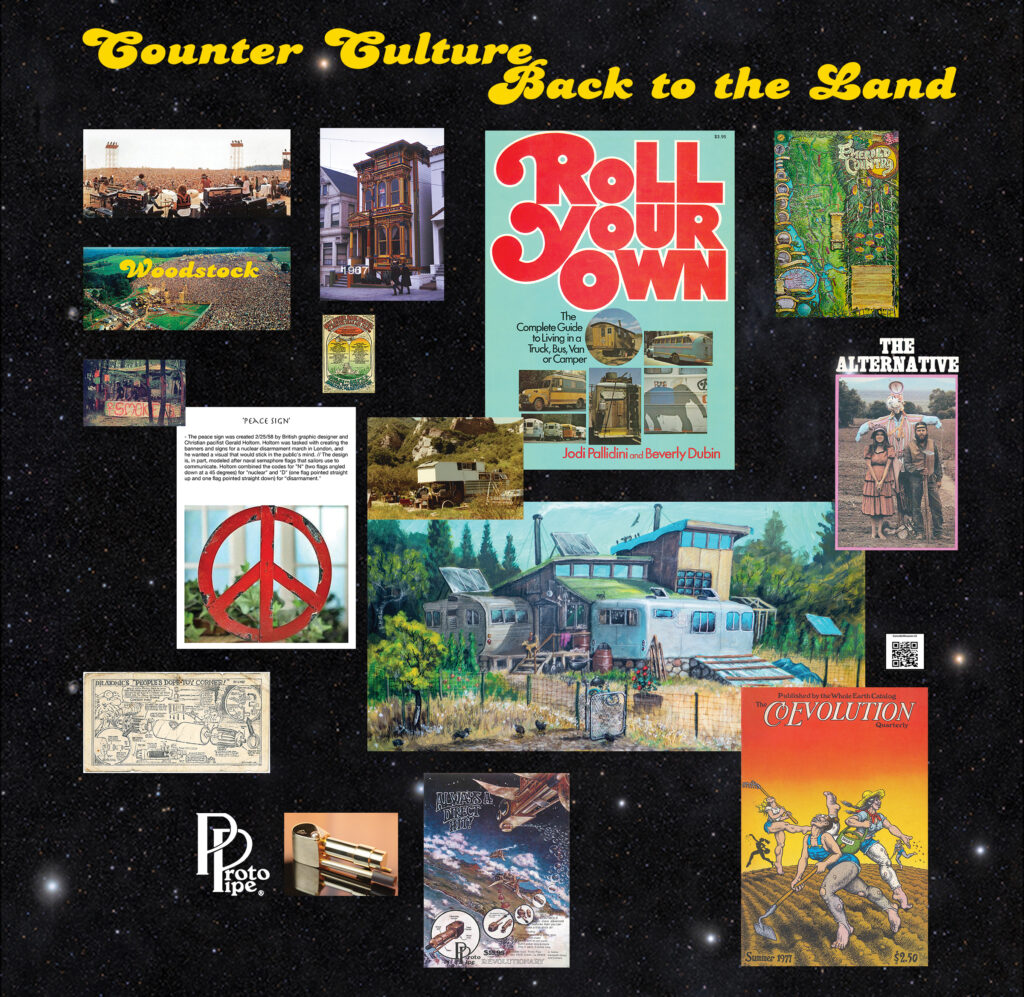perspectives on counterculture
Counterculture & Back-To-The-Land
Beginning in the 1960s, if you stood up against the “man,” the dominant, corporate/governmental dictated culture, you were considered counter to the norm, and the name, “counterculture,” became part of the vernacular.
The Painted Lady is a nod to the San Francisco architecture of the Haight-Ashbury area, which during the 1960s was the hub of the counterculture movement of the world. Think Liverpool on steroids!
Once the summer of love had passed and the city became less friendly to hippies, it was time to put countercultural ideas into action. The yearning for a less consumer-based lifestyle and a closer relationship with nature and healthier living resulted in many individuals and groups moving north to more rural areas to rent or buy land and in many cases experimenting with cooperative living and working arrangements by establishing communes and business coops. The back-to-the-land movement was born.
Larry Todd’s iconic “Hippie Mansion” depicts a typical Northern California homestead: you might start off with a trailer, get some chickens, plant the garden foods and a couple of cannabis plants. If you’re lucky, you get a harvest and have more pot than you can use yourself. If you’re really lucky, you get some solar panels!

